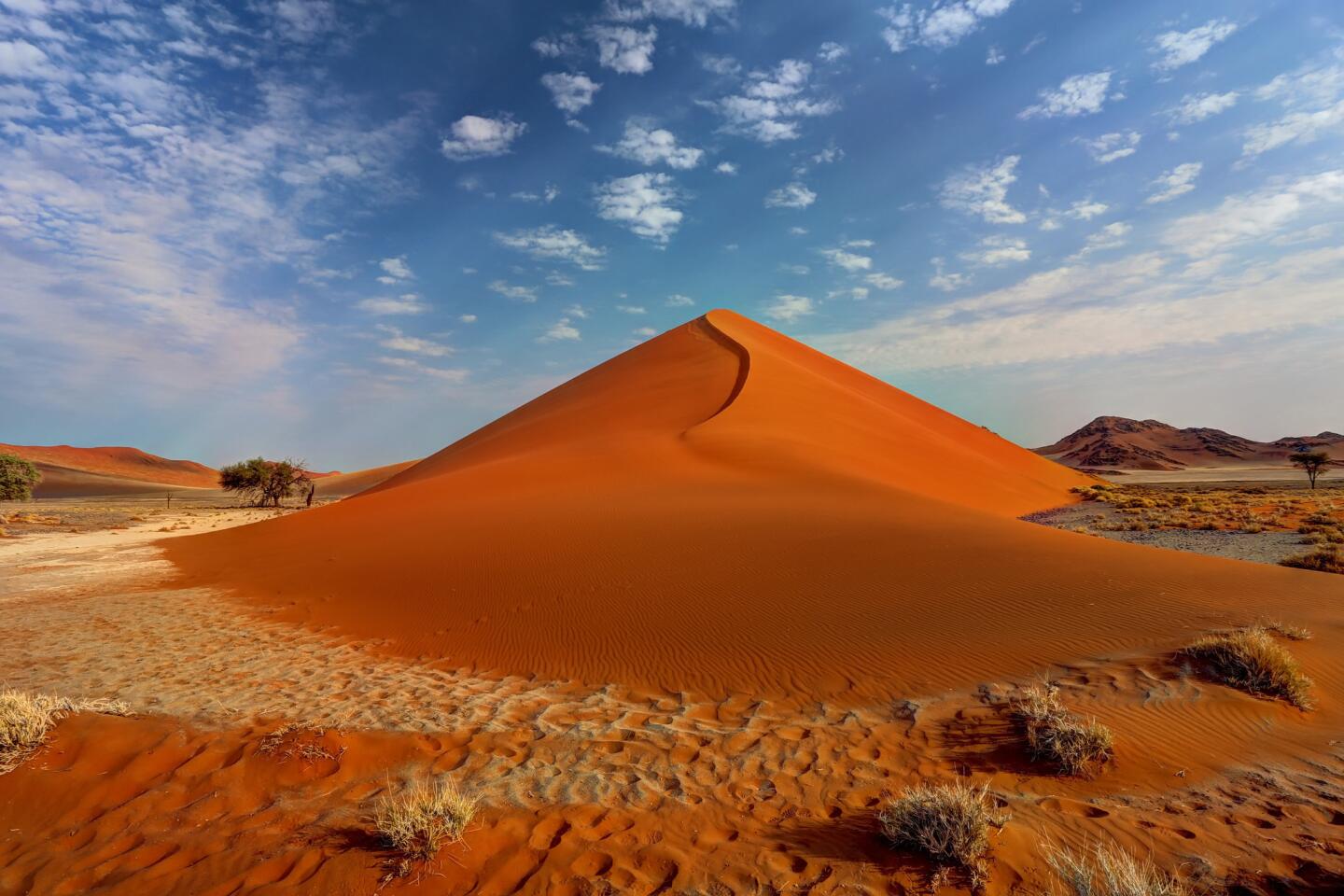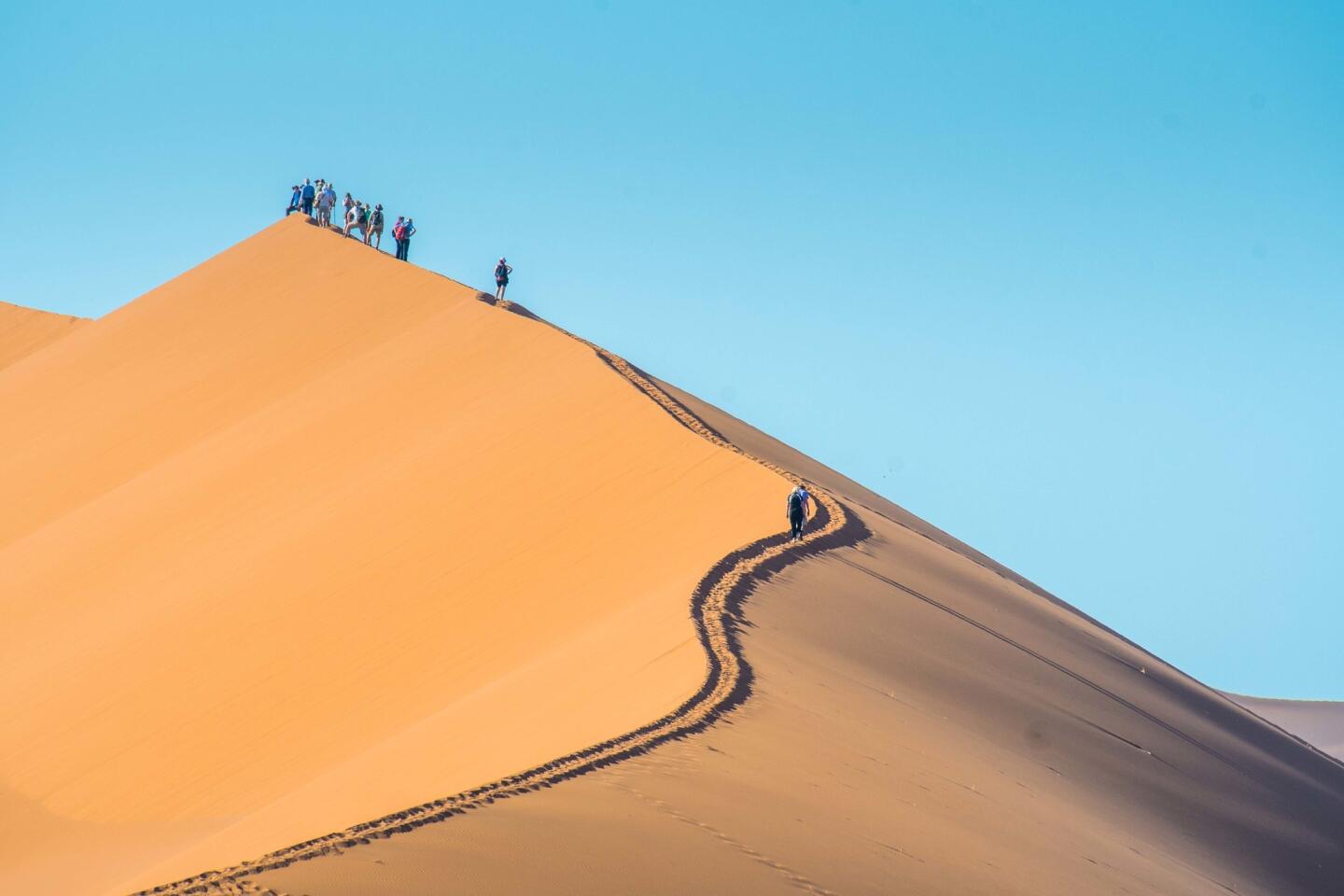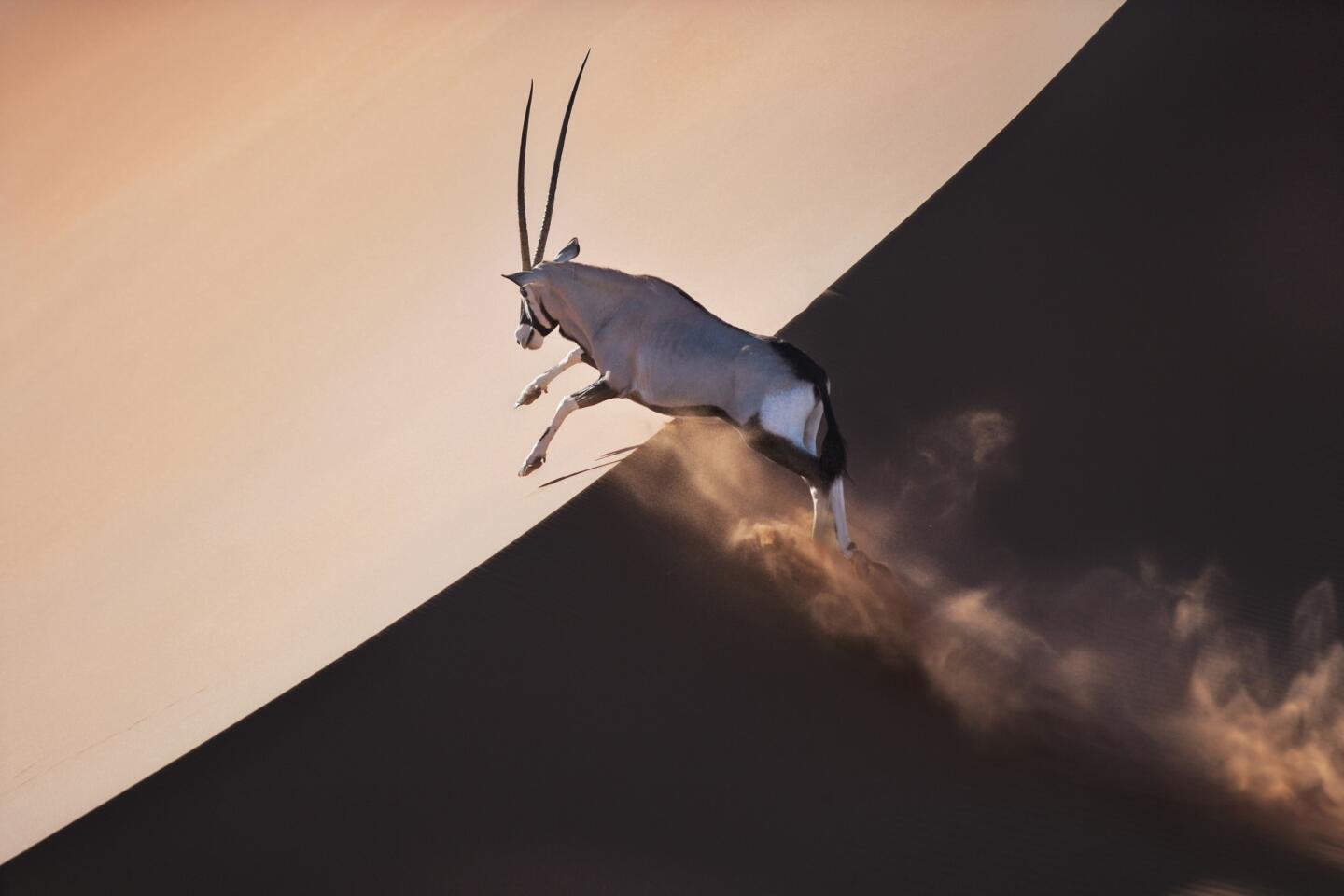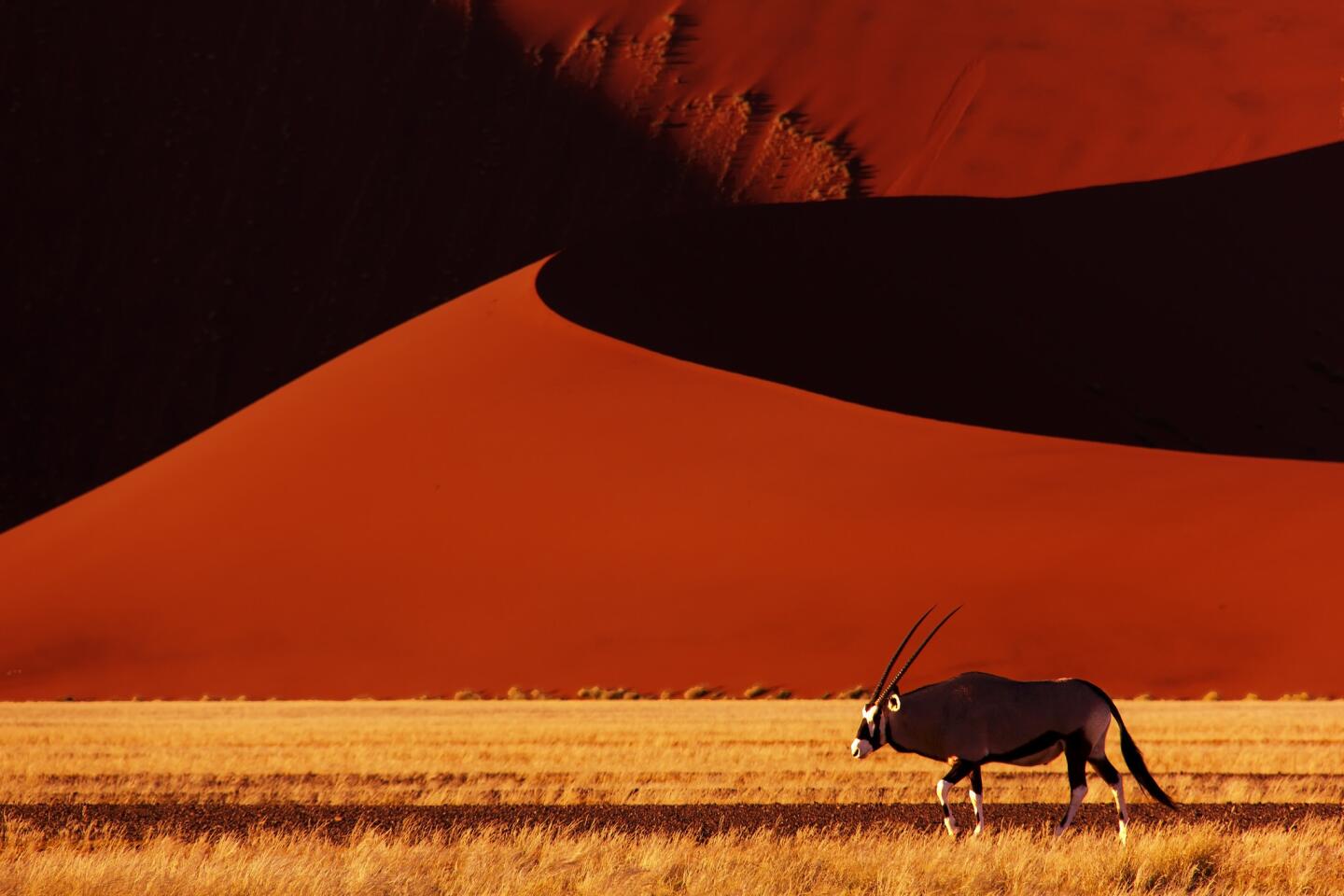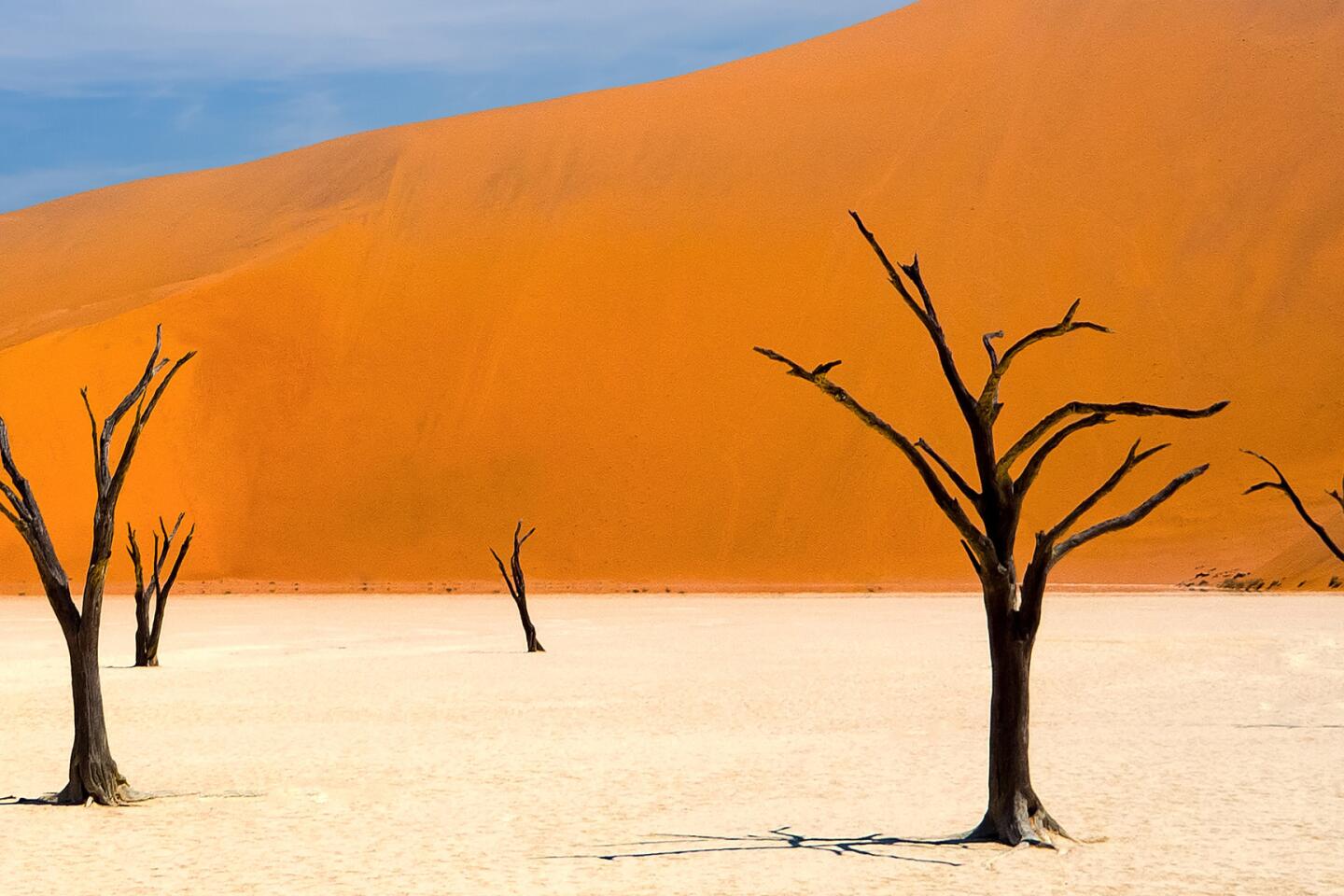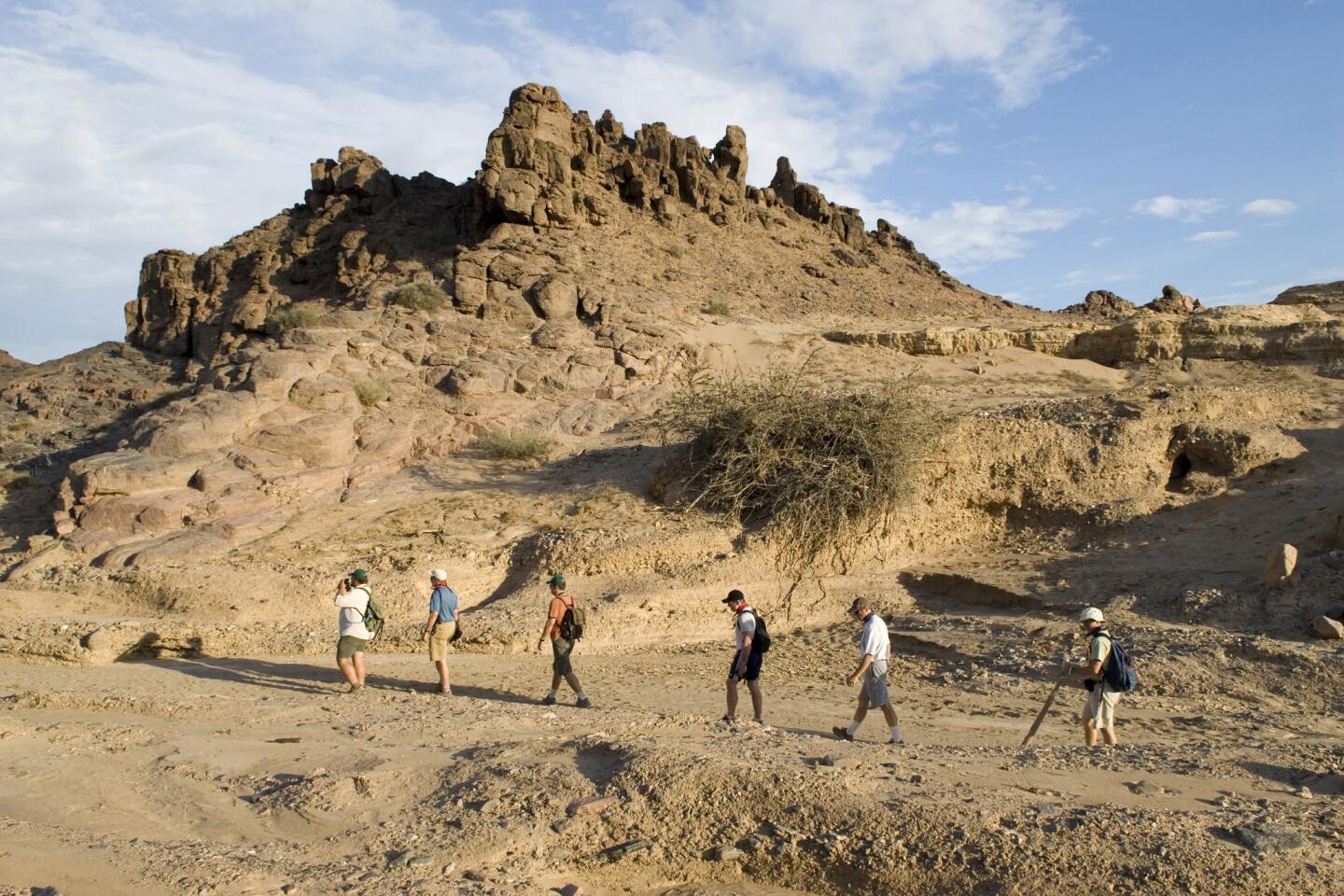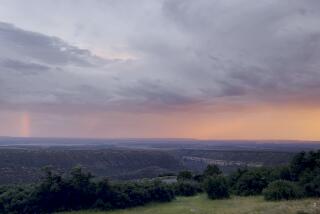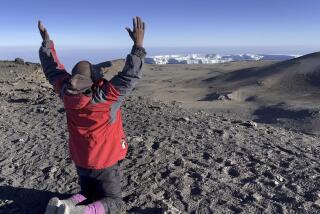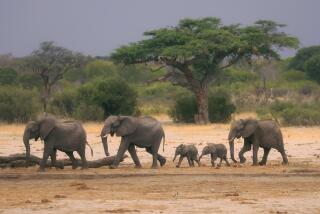It’s Namibia’s purity, its untouched qualities, that compel people to visit, then never want to leave
- Share via
As my older daughter prepared last summer to take off for college, there was just one thing left to do: Kidnap her and take her someplace where there is little Wi-Fi, no boyfriend and no threat of exams. It had to be lovely, exciting and adventurous, somewhere we could forge memories she would have forever.
That place was Namibia.
Namibia isn’t Africa’s rock star. Although it has animals, they are scattered over a wide area, so people visit here once they’ve had enough of traditional driving safaris.
The country, with 2.3 million people living on land twice the size of California, is graced with enormous natural beauty — a rugged Atlantic coast, desert, bluffs, wide river systems and the world’s largest sand dunes.
It also has desert-adapted lions and desert elephants, oryx, ostrich and cheetah, but most people come to Namibia because it’s safe, friendly and among the most untouched countries on Earth.
MORE AFRICA: Tanzania’s Tinga Tinga style »
I called Leora Rothschild at Rothschild Safaris and told her my plan. Rothschild, a South African with a U.S.-based company, knows Africa well and is my go-to planner. We devised a Namibia itinerary that would take us to four locations over two weeks.
Naankuse sanctuary
After a lengthy flight from London, we spent the first night at Naankuse Lodge and Wildlife Sanctuary, a 30-minute drive from the international airport outside Windhoek, the capital. The private sanctuary, on 3,460 acres, has an elegant lodge, six individual chalets, a pool and a restaurant.
The sanctuary, a passion project of conservationists Marlice and Rudie van Vuuren, never turns away an animal. Most are injured or orphaned. If they are cubs, as in the case of cheetahs Kiki, Aiko and Aisha, Marlice raises them by hand, often in her home.
Cheetahs and cattle farmers are often at war in Namibia because the cats prey on the cows. Farmers often shoot them on sight, but the Van Vuurens’ team will fly in, dart the cheetah and relocate it to Naankuse.
Cubs and other large cats, once raised by humans, cannot be released back into the wild, so they stay at Naankuse. The cost to feed them became so burdensome that the Van Vuurens decided to open an upscale lodge and an education center to help offset the cost.
MORE AFRICA: In Zambia, a safari means going with the flow »
Nankuuse is a breathtaking opportunity to get up close and interact with animals you would otherwise see in documentaries or from a vehicle.
You can choose a different activity each day, which typically costs $25 to $40 per person. You can take a walk with Kiki, the cheetah, or the hand-reared caracal; wander the veldt with bushmen and learn about their world; or take a horseback ride around the property.
Besides walking with the beautifully natured, 10-year-old Kiki, our favorite activity was the behind-the-scenes tour with Marlice, where we met animals housed at the feeding center and played with baby baboons, which laugh just like humans when tickled.
Info: Naankuse Lodge
Sossusvlei and Namib-Naukluft National Park
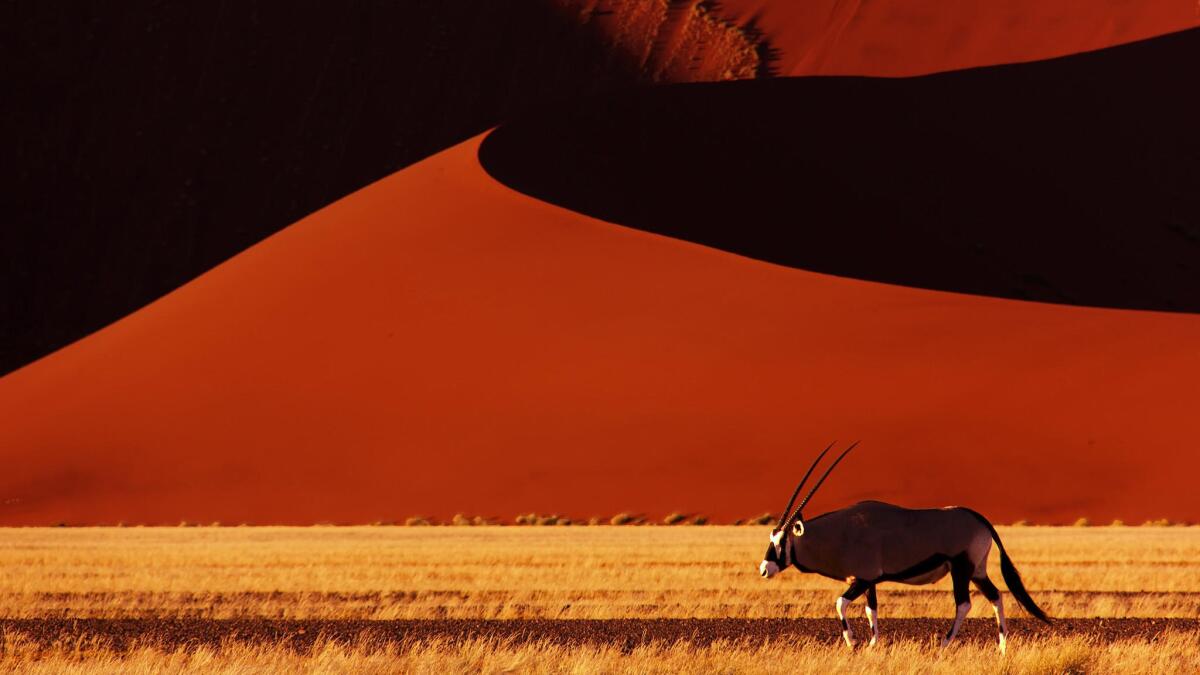
We left Naankuse and flew west on an 18-seater toward the Namib Desert. The vast unmarked sand dunes we skimmed over looked like a pale, turbulent ocean.
Some people find this scenery lacking in life. I find it incredibly beautiful and am astonished when I see creatures that survive here. Zebras, aardvarks, ostriches, oryxes, snakes and beetles battle it out with the unforgiving sun and rely on a water supply that comes mainly from fog.
If you’ve seen photos of dead trees standing on a flat plain surrounded by brilliant orange dunes, that’s Deadvlei. The dunes, some of the largest in the world, are part of Sossusvlei and are within Namib-Naukluft National Park.
Deadvlei could well be part of a burned-out planet turned tourist destination. Skeletal trees still stand 500 years after their water system was cut off, scorched by the sun and with too little water to decompose.
Behind Deadvlei is Big Daddy, the second-largest sand dune in the park, at 1,066 feet, and the one tourists climb and jump down daily.
We stayed at &Beyond’s luxurious Sossusvlei Desert Lodge, on private land outside the park but with access to its dunes and other activities.
Our favorite was quad biking. Just before sunset, our guide took us through the dunes to a point where we could look down on a vast expanse dotted with Namibia’s mysterious fairy circles.
These circles, seen all over the country, are round shapes in which nothing grows. Many theories exist, ranging from alien life to radioactivity in the rock below, but none has withstood scientific testing. The circles remain a mystery and are part of the eerie thrall of Namibia.
At night we’d climb into the lodge’s observatory with the visiting astronomer and gaze through the telescope at the unadulterated night sky, then head back to our suite, built of rock to mimic the landscape.
Info: Sossusvlei Desert Lodge
Hoanib, Kaokoland
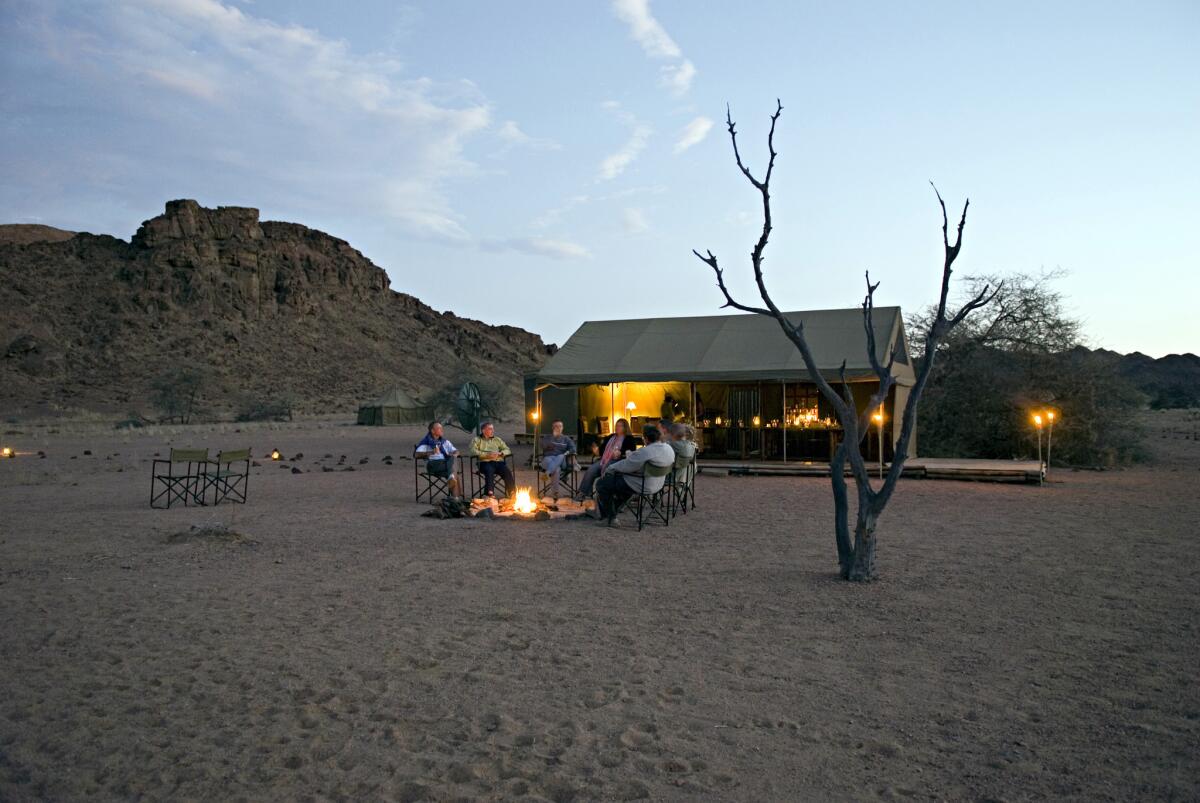
Hoanib Skeleton Coast Camp, in Kaokoveld in remote northwestern Namibia, sits close to the Skeleton Coast, so named because the shoreline is littered with shipwrecks.
Flat plains scattered with rocks give way to the occasional rocky mound, and trees stand expectantly beside dry river beds. Other than at the seven-tent camp, human life here can be counted in the dozens for hundreds of miles.
If you are lucky you will see desert-adapted elephants and lions. Desert lions can travel for hundreds of miles and are stronger, leaner and more able to cope with harsh surroundings than plains lions.
On a drive to the coast, we followed lion tracks for miles and were rewarded with a female atop a rock, regally overlooking the emptiness.
The luxury at this camp, as far-flung as it is, is staggering. The tents are huge and decorated like glamorous suites at a groovy New York hotel. There is no privation here, and one wonders what it takes to get fresh lettuce this far.
Info: Hoanib Skeleton Coast Camp
Hartmann’s Valley
The magical Serra Cafema Camp sits on the banks of the Kunene River in Hartmann’s Valley, facing an uninhabited part of Angola and the continuation of the Namib Desert.
Remote, yes, but there is much to do at this camp. The Himba, Angola’s magnificent ocher-covered nomadic tribe, live in this area. If you go soon you may see the last of the traditionally dressed women, topless and in goatskin aprons with ochre-and-fat-covered dreadlocks.
You can boat and fish on the river, and if you go at sunset you can disembark on the other side and say you have had cocktails in Angola.
The quad biking in this area is spectacular. If you have an adventurous guide, you can rocket up and down the sand dunes.
You also can spot hardy wildlife, such as the incredible Namaqua chameleon, on a morning walk in the Marienfluss Mountains, or go before sunset and have sundowner cocktails on the shimmering red dunes.
The tents at Serra Cafema are a testament to rustic luxury. Take Swiss Family Robinson’s treehouse, put it on the ground, add a bit of velvet, a bathtub and some Himba-inspired designer cushions, and you have a place you won’t want to leave.
Indeed, Namibia is a place you won’t want to leave at all. We returned home with memories and more implanted in my daughter’s mind. I predict a life of adventure travel for her.
Info: Serra Cafema Camp
If you go
THE BEST WAY TO WINDHOEK, NAMIBIA
From LAX, Qatar, KLM, Lufthansa, Delta, South African, Air Berlin, British, Turkish, Emirates and American offer connecting service (change of planes) to Windhoek. Restricted round-trip fares from $1,649, including taxes and fees.
Rothschild Safaris; (800) 405-4243. Ourtrip cost $9,500 a person, excluding airfare. Rothschild has Namibia safaris from $4,800 per person.
TO LEARN MORE
travel@latimes.com
@latimestravel
More to Read
Sign up for The Wild
We’ll help you find the best places to hike, bike and run, as well as the perfect silent spots for meditation and yoga.
You may occasionally receive promotional content from the Los Angeles Times.
